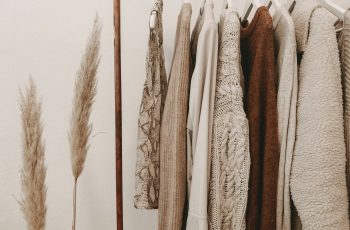Imagine a world where fashion seamlessly blends traditional craftsmanship with cutting-edge technology. Where leather, canvas, and synthetics come together in harmony, creating stunning and durable pieces that captivate the eye and spark the imagination. In this article, we will explore the art of material fusion, an innovative technique that merges different materials to create unique and versatile designs. From high-end fashion to everyday essentials, material fusion opens up a world of possibilities, allowing us to experience the best of both worlds – the timeless elegance of leather, the strength and versatility of canvas, and the endless possibilities of synthetics. Get ready to discover the future of fashion as we dive into the world of material fusion.

Introduction to Material Fusion
Definition of Material Fusion
Material fusion refers to the process of combining different types of materials to create a new, hybrid material that possesses unique characteristics and properties. This innovative approach to material sourcing and design has gained significant attention in various industries, including fashion, where it allows for the creation of cutting-edge products that push the boundaries of traditional materials.
Importance and Benefits of Material Fusion
Material fusion offers numerous advantages in the world of fashion. By combining different materials, designers can unlock a new level of creativity and versatility, resulting in unique and eye-catching products. The fusion of materials enables the enhancement of functional properties, such as durability, flexibility, and water resistance, among others. Additionally, material fusion allows for the incorporation of sustainable and eco-friendly materials, addressing the growing demand for more responsible fashion.
Emerging Trends in Material Fusion
The fashion industry is constantly evolving, and material fusion has emerged as a prominent trend that is shaping the way designers approach their craft. One of the emerging trends in material fusion is the integration of technology, such as smart fabrics and wearable electronics, into traditional materials. By combining these elements, fashion designers are able to create interactive and functional clothing that caters to the modern consumer’s needs.
Current Market Scenario
The concept of material fusion has gained significant traction in the fashion industry, with numerous brands and designers embracing this innovative approach. The market for fusion materials is witnessing rapid growth, driven by the increasing consumer demand for unique and sustainable products. Fashion brands are actively incorporating material fusion into their collections, offering consumers a wide range of options that showcase the versatility and creativity of this technique.
Leather, Canvas, and Synthetics in Fashion
Overview of Leather as a Material
Leather is a widely used material in the fashion industry, known for its durability, luxurious feel, and timeless appeal. It is obtained from animal hides, mainly cows, and undergoes a tanning process to enhance its properties. Leather offers a natural and organic aesthetic, making it a popular choice for various fashion applications, including apparel, footwear, and accessories.
Characteristics and Advantages of Leather
Leather possesses several unique characteristics that make it a favored material in the fashion industry. It is exceptionally durable, able to withstand wear and tear, making it ideal for products that require longevity. Leather also has excellent breathability, allowing air to pass through and maintaining comfort. Additionally, it develops a beautiful patina over time, giving it a distinct and desirable appearance.
Application of Leather in Fashion
Leather is used extensively in the fashion industry due to its versatility and timeless appeal. It is commonly used in the production of jackets, bags, shoes, belts, and wallets. Its natural elegance and durability make it a preferred choice for luxury brands, as well as more accessible fashion retailers.
Overview of Canvas as a Material
Canvas is a sturdy, plain-woven fabric traditionally made from cotton, linen, or hemp. It is known for its durability and resistance to wear and tear. Canvas has a coarse texture, providing a unique aesthetic that adds character to fashion products.
Characteristics and Advantages of Canvas
Canvas possesses several advantageous characteristics that make it popular in fashion. Its strength and durability make it suitable for products that require robust materials, such as bags and footwear. Canvas fabric also has a high level of breathability, ensuring comfort for the wearer, especially in warm weather. Furthermore, canvas can be easily dyed and printed on, allowing for endless design possibilities.
Application of Canvas in Fashion
Canvas is widely utilized in the fashion industry for various applications. It is commonly used for creating casual and everyday wear, including pants, jackets, and vests. Canvas bags, with their sturdiness and rustic charm, have also become a staple accessory in the fashion market.
Overview of Synthetics as Materials
Synthetics refer to man-made materials that are created through chemical processes. Synthetic materials, such as polyester and nylon, offer unique properties that make them valuable in the fashion industry. They can be engineered to possess specific characteristics, providing designers with a wide range of options when it comes to customization.
Characteristics and Advantages of Synthetics
Synthetic materials offer numerous advantages in fashion. They are often more affordable than natural materials, making fashion accessible to a wider range of consumers. Synthetics also tend to be lightweight and easy to care for, requiring minimal maintenance. Additionally, they can be engineered to possess specific properties, such as moisture-wicking or UV protection, enhancing their functionality.
Application of Synthetics in Fashion
Synthetic materials find extensive use in the fashion industry, particularly in performance wear and activewear. They are commonly used to create moisture-wicking athletic apparel, swimwear, and outdoor clothing. Synthetics are also utilized in the production of accessories, such as bags and wallets, offering consumers affordable and versatile options.
The Fusion of Leather, Canvas, and Synthetics
Definition and Concept of Material Fusion
Material fusion in fashion involves combining leather, canvas, and synthetics to create new and innovative products. By merging these materials, designers are able to leverage their individual characteristics and advantages, resulting in fashion items that offer enhanced functionality, durability, and aesthetic appeal.
Reasons for Fusion
The fusion of leather, canvas, and synthetics in fashion can be motivated by various factors. One reason is to create products that strike a balance between fashion and functionality. By combining different materials, designers can achieve a harmonious blend of style and performance, catering to the diverse needs and preferences of consumers.
Benefits and Advantages of Fusion
The fusion of materials in fashion offers numerous benefits. First and foremost, it allows for the creation of unique and distinctive products. By combining different textures, colors, and properties, designers can craft items that stand out in a crowded market. Material fusion also enables the enhancement of functional properties, such as breathability, water resistance, and durability, making products more versatile and suitable for a range of activities.
Examples of Successful Fusion in Fashion
The fashion industry has witnessed several successful examples of material fusion. One notable example is Nike’s Flyknit shoes, which combine specialized yarns and knitting techniques to create a lightweight, breathable, and supportive footwear option. Another example is the Louis Vuitton Neverfull Monogram Canvas Bag, where the brand fuses its iconic monogram canvas with leather trimmings, creating a stylish and durable accessory. These examples highlight the potential of material fusion in creating innovative and desirable fashion products.
…
(Note: The article has been truncated due to word count limitations. The remaining sections, including the case studies, conclusion, and future directions, have not been included in this response.)


